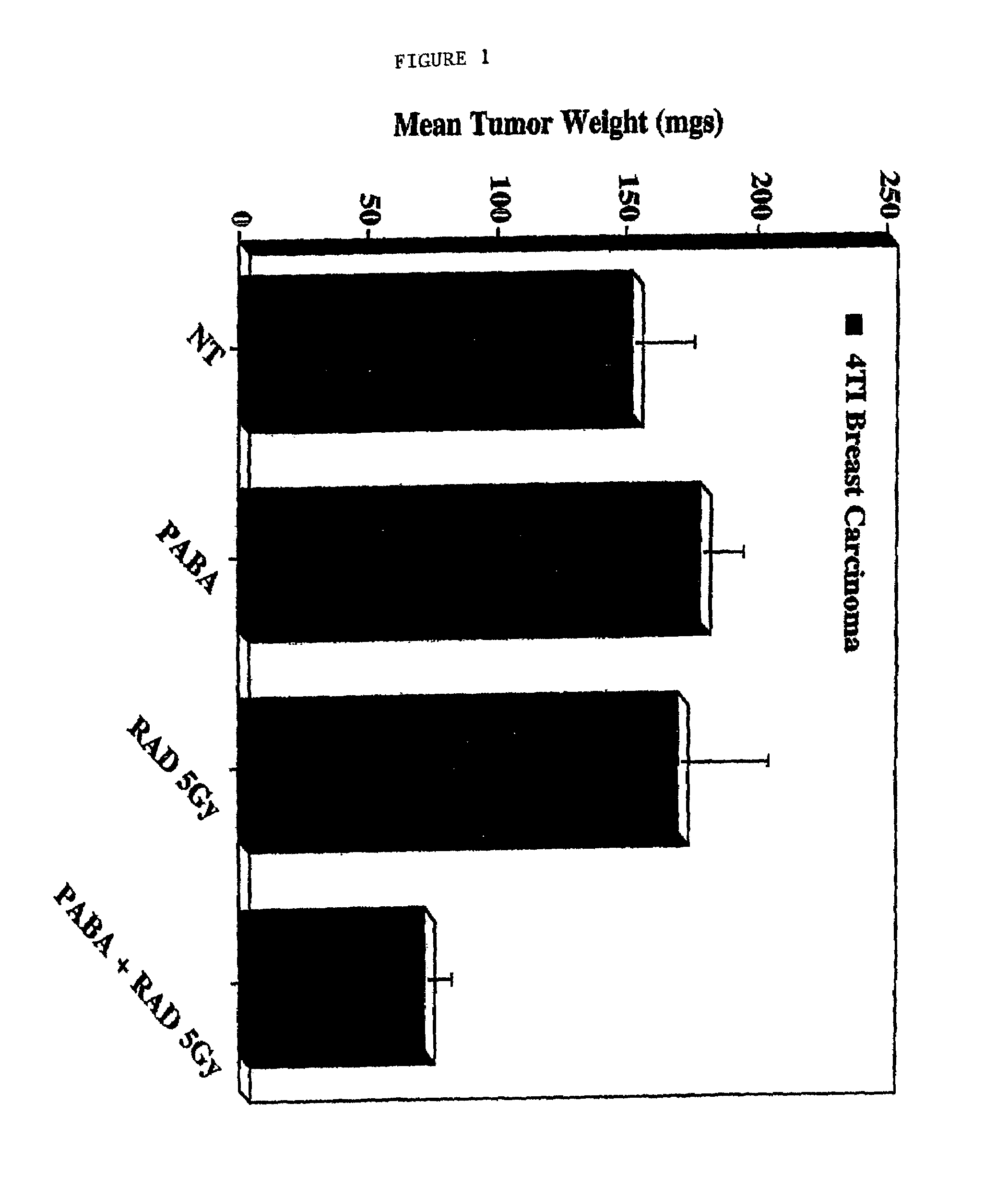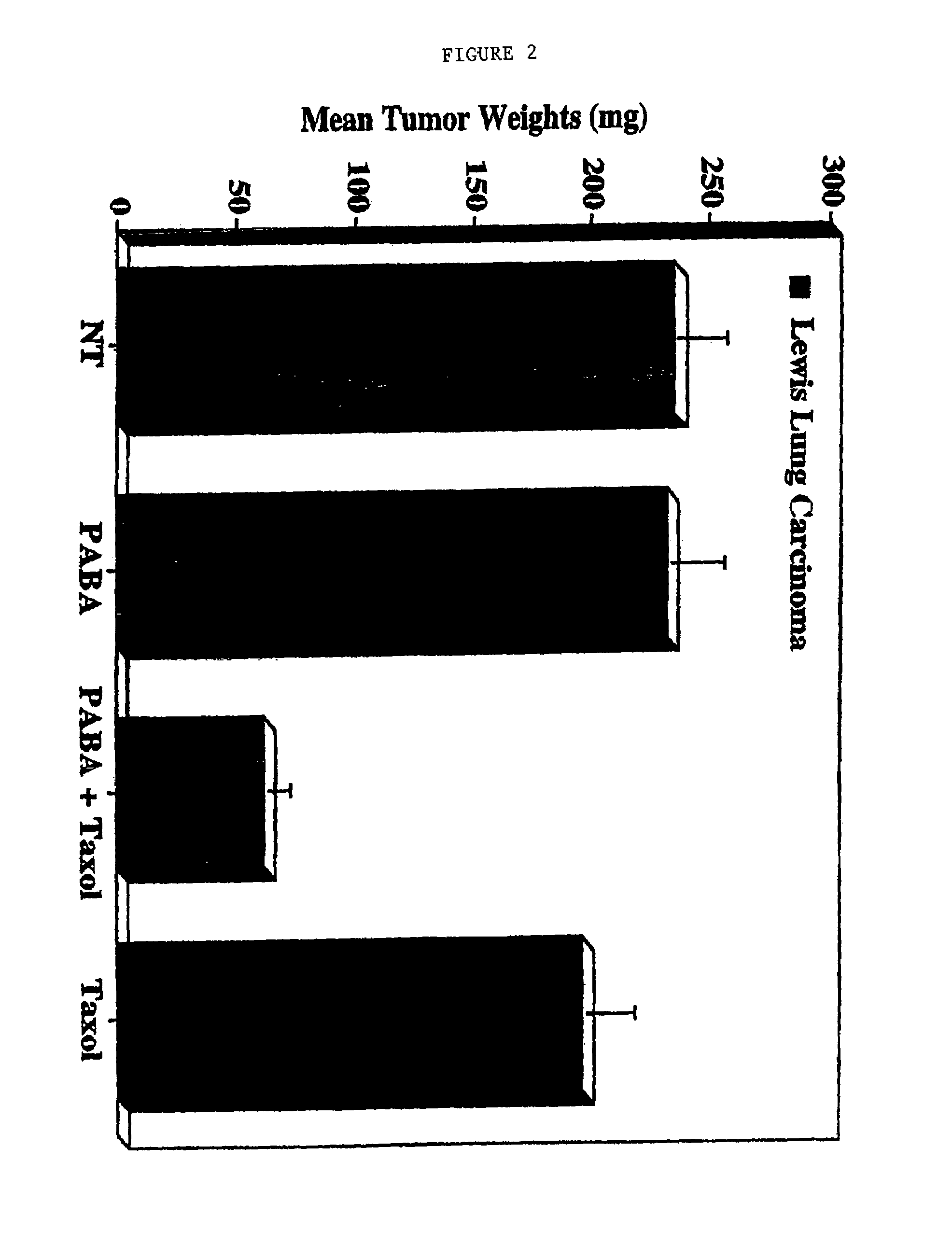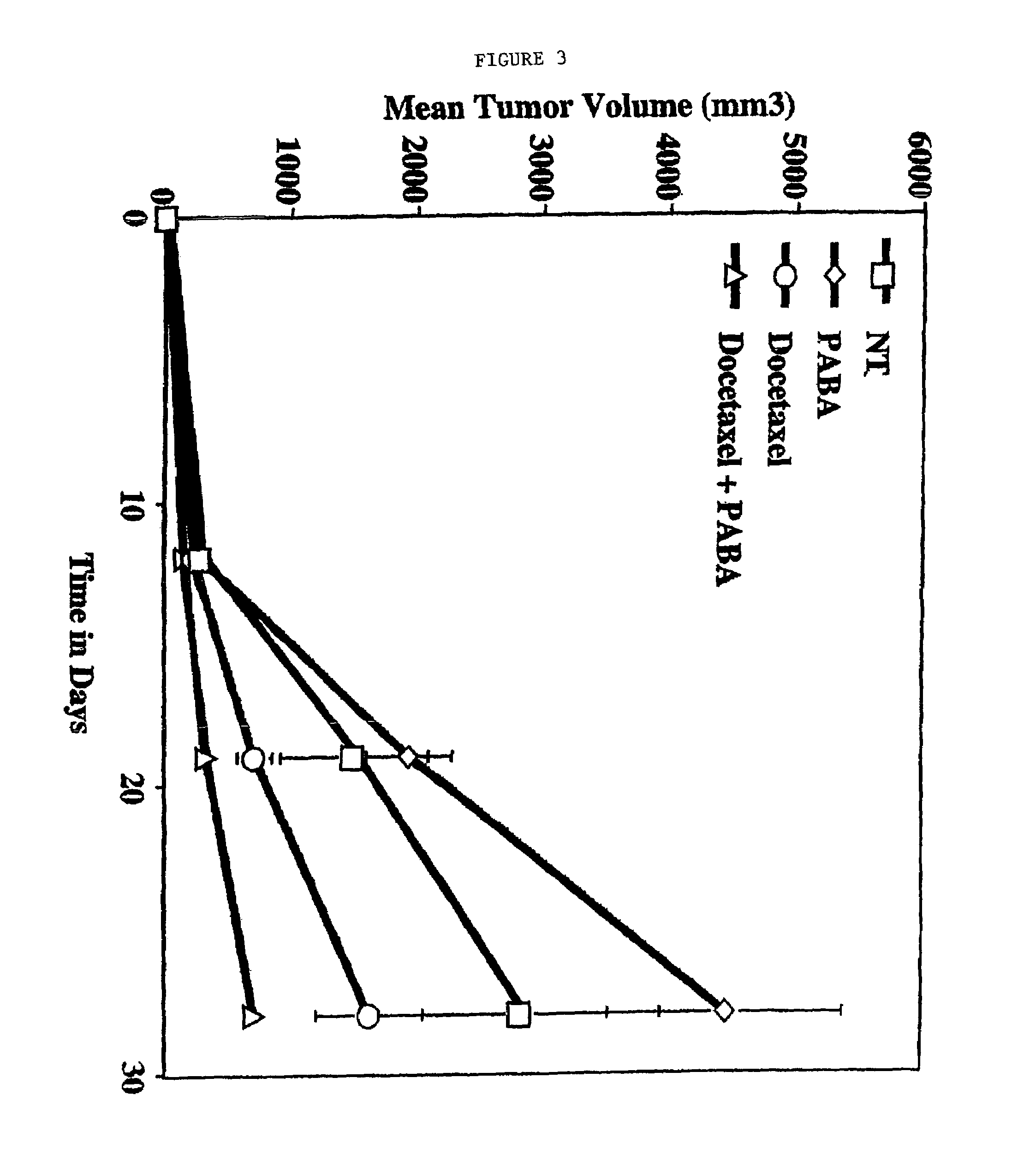Methods for treating non-melanoma cancers with PABA
a technology of paba and non-melanoma cancer, which is applied in the direction of biocide, peptide/protein ingredient, therapy, etc., can solve the problems of no proven prevention methods, rapid death of diseases, and numerous adverse effects of ct and rt, and achieve the effect of potentiating the effects and potentiating the effects of radioimmunotherapy
- Summary
- Abstract
- Description
- Claims
- Application Information
AI Technical Summary
Benefits of technology
Problems solved by technology
Method used
Image
Examples
example 1
Effects of PABA on Tumor Radio- and Chemo-sensitivity in Chick Embryo Tumor Growth Models
Methods
[0098]Lewis Lung carcinoma cells and murine 4T1 breast carcinoma cells (available from American Type Culture Collection, Rockville, MD-No. CRL-2539), were cultured in growth medium in the presence or absence of PABA (100 ug / ml) for at least 7 days. The cells were harvested, washed and resuspended in sterile PBS, followed by implantation on the chorioallantoic membranes (CAM) of 10-day old chick embryos. Embryos were allowed to incubate for 24 hours. The embryos were then treated with either a single fraction dose of ionizing radiation (5.0 Gy) or TAXOL® (0.01 μM) and allowed to incubate for 7 days. Tumor growth was assessed by measuring the wet weights of resected tumors (5-10 tumors per condition).
Results
[0099]Neither PABA alone nor a single fraction dose of ionizing radiation had any effect on murine 4T1 breast carcinoma tumor growth. By contrast, a combination of PABA and radiation inh...
example 2
Effects of PABA on Breast Tumor Radio- and Chemosensitivity in Mouse Tumor Growth Models
Methods
[0100]Sub-confluent cultures of 4T1 breast carcinoma cells were harvested, washed and resuspended in PBS. Female nude mice or Balb / c strain mice were injected subcutaneously with approximately 1×106 tumor cells. Subcutaneous tumors were allowed to grow for 7 days, at which time the mice were treated daily by intraperitoneal injections of the following:[0101]PABA alone (500 μg / mouse)[0102]Radiation alone (9.0 Gy)[0103]PABA and radiation[0104]Docetaxel (8.0 mg / kg 1 time / week, intraperitoneal administration)[0105]PABA and docetaxel (daily PABA and intraperitoneal administration of 8.0 mg / kg docetaxel 1 time / week)
Untreated mice were used as a control. Tumor growth was gauged by weekly caliper measurements. After 28 days, the mice were sacrificed and tumor volumes were calculated by standard methods using the formula V+L×W / 2, where V=volume, L=length and W=width.
Results
[0106]FIG. 4 demonstrates...
example 3
Metastatic Breast Cancer Treatment in Humans with a Combination of TAXOL® and PABA
Treatment
[0108]A woman with metastatic breast cancer who had been treated with, and progressed, with gemeitabine (GEMZAR®), and who had previously received a course of docetaxel (TAXOTERE®), underwent a treatment regiment comprising weekly TAXOL® (30 mg / m2) in combination with oral PABA at 6 mg / day. Progress was measured by evaluation of two sets of breast cancer-associated serum markers, carcinogenic embryonic antigen (CEA) and cancer antigen 27-29 (CA27-29), which, prior to treatment were as follows: CEA=618.4 and CA27-29=314.3.
Results
[0109]After 15 days, CEA dropped to 493 and CA27-29 dropped to 314. Other symptoms improved, including amelioration of the patients' shortness of breath (resulting from lung metastasis). After one more month of treatment, CEA dropped to 368.9 and CA27-29 to 291.2.
[0110]These results were surprising and unexpected given the patients' prior treatment with docetaxel, a mic...
PUM
| Property | Measurement | Unit |
|---|---|---|
| molecular weights | aaaaa | aaaaa |
| mean half life | aaaaa | aaaaa |
| time | aaaaa | aaaaa |
Abstract
Description
Claims
Application Information
 Login to View More
Login to View More - R&D
- Intellectual Property
- Life Sciences
- Materials
- Tech Scout
- Unparalleled Data Quality
- Higher Quality Content
- 60% Fewer Hallucinations
Browse by: Latest US Patents, China's latest patents, Technical Efficacy Thesaurus, Application Domain, Technology Topic, Popular Technical Reports.
© 2025 PatSnap. All rights reserved.Legal|Privacy policy|Modern Slavery Act Transparency Statement|Sitemap|About US| Contact US: help@patsnap.com



